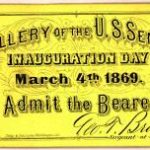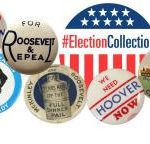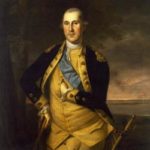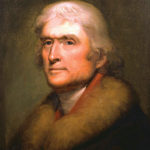In this collection, you will find resources for teaching about the inauguration, news lessons surrounding the 2020 election, ways to help students engage in civil discourse, ideas for student civic engagement, strategies for discussing controversial issues in the classroom and more resources about the foundations of democracy and government.
The Electoral College Process
In this activity, students will learn the steps in the Electoral College process, from Election Day to Inauguration Day. They will analyze historical primary sources from various Presidential elections, each representing a different step in the process, and arrange them in the correct sequence.
Inaugurations: Stepping into History

Discover what inauguration ceremonies over the centuries can teach us about our changing nation and the leaders who have shaped it.
Taking a close look at the moments in which these leaders first took office can provide rich opportunities to investigate the history of the United States as it has changed over the centuries. It can also provide unique insights into these remarkable individuals as they first stepped into history.
Presidential Inaugurations, Past and Present
Every four years, on the steps of the U.S. Capitol building, the newly-elected President of the United States is inaugurated. This event not only includes the president taking the oath of office, but also provides the opportunity for the new President to lay out the direction he hopes to take the country. By analyzing historic texts and visuals, students can find common themes as well as important differences when comparing different inaugurations.
“No Event Could Have Filled Me with Greater Anxieties”: George Washington and the First Inaugural Address, April 30, 1789
Phillip Hamilton’s “‘No Event Could Have Filled Me with Greater Anxieties’: George Washington and the First Inaugural Address” reminds us how precedent setting our first president was. Anxious that his lack of administrative experience might make his task as the executive of a new nation difficult, Washington nevertheless proved he was as expert at statesmanship as he was on the battlefield. Free registration for students and teachers required to access resource.
Timeline of Thomas Jefferson’s Life
Choosing to Make a Nation: Constitutional Convention Simulation
The Choosing to Make a Nation Curriculum Project developed by award-winning author Ray Raphael is a student-centered, primary source-rich approach to teaching about American history and our nation‘s founding documents.
An 8-lesson simulation in which students become delegates from specific states and address the same issues the framers faced. Unit includes the following lesson plans –
(1) Reform or Revolution?
(2) Composition of Congress
(3) Creating an Executive Branch
(4) Should Judges Judge Laws?
(5) Balance of Powers
(6) Slavery and the Constitution
(7) Amendments and Ratification
(8) To Sign or Not to Sign?
Option A: The historical Constitution
Option B: Student-generated constitution
George Washington and the Founding of the U.S. Government
The founding of the United States government is intimately intertwined with George Washington’s own biography. This web page offers resources for teachers to use in their classrooms associated with Washington’s role in the creation of the government. Included are primary and secondary sources, as well as essential questions for teaching the founding, lesson plans and classroom ready activities.
Presidential Campaign Memorabilia on DocsTeach

This page includes a variety of primary sources in the form of artifacts, photographs, documents, and more; as well as additional online resources. Themes highlight political memorabilia from presidential campaigns from the 1850s through the 1990s. Items come from the holdings of the Presidential Libraries of the National Archives.
George Washington and the Revolution

This short video examines the role played by George Washington in the defeat of the British during the American Revolution. From the moment he assumed command, Washington emphasized the importance of union to the war effort, in spite of challenges faced while commanding forces that were ill-fed, ill-supplied, and ill-served by the Confederation Congress. Professor W. B. Allen concludes that Washington’s leadership held both the military and the nation together during this tumultuous period.
